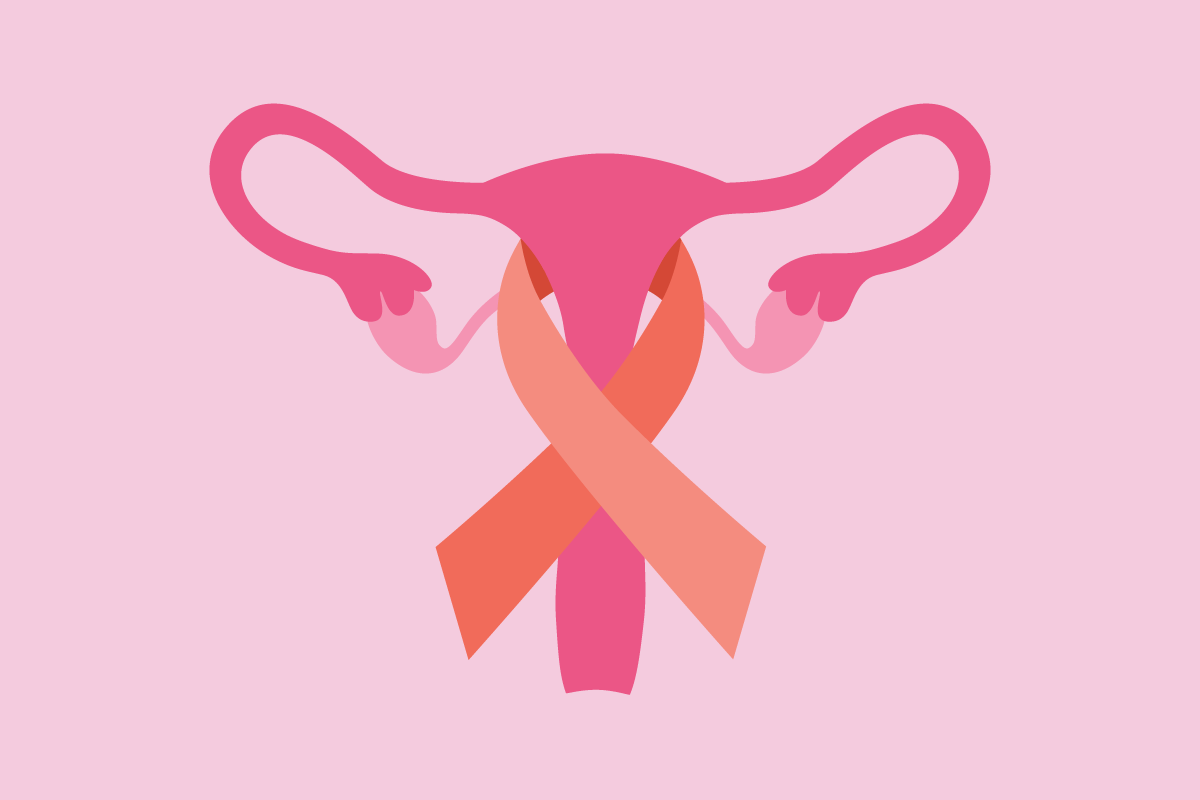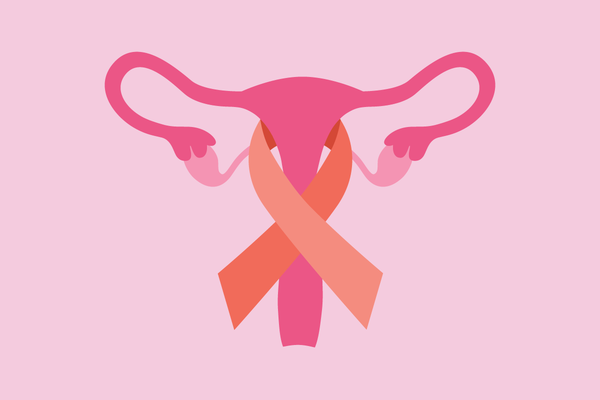Endometrial cancer is the most common of the cancers that affects the reproductive organs of women or people assigned female at birth in the United States. About 66,000 cases are diagnosed every year — and rates are on the rise.
There is no single test or screening for endometrial cancer. So healthcare providers (HCPs) rely on many different types of testing to make a diagnosis.
Understanding endometrial cancer and how it’s diagnosed may help you know what to expect.
What is endometrial cancer?
Endometrial cancer is any cancer that starts in the lining of the upper part of the uterus, known as the uterine cavity. It happens when an as-yet-unknown trigger causes healthy cells in the lining (endometrium) to mutate, or change, into cancer cells.
Read: Fast Facts: What You Need to Know About Endometrial Cancer >>
What are the symptoms of endometrial cancer?
Abnormal bleeding is a main symptom of endometrial cancer. This includes:
- Vaginal bleeding between periods
- Major changes in your menstrual cycle (even during perimenopause, when bleeding may be unpredictable)
- Periods that are very heavy, last a long time or happen often
- Any amount of bleeding or spotting after menopause
Other common symptoms are:
- Pain or cramping just below your belly
- Changes in your vaginal discharge
- New vaginal discharge after menopause
The Menopause Society points out that many postmenopausal women with endometrial cancer go undiagnosed because they don’t know bleeding — even if it happens just once — is a major red flag.
“For postmenopausal women, any vaginal spotting, bleeding or discharge is not going to be automatically cancer, but warrants a workup,” said Nita Lee, M.D., associate professor of obstetrics and gynecology at the University of Chicago.
But providers don’t always tell their patients to watch for bleeding after menopause. In a survey conducted by The Menopause Society, less than half of respondents said their doctors counseled them about postmenopausal bleeding and endometrial cancer.
Even when postmenopausal women do see a provider about irregular bleeding, they may not be checked for endometrial cancer. “Oftentimes, women will present to their doctor and say, ‘I'm having spotting,’ and doctors will discount them and say, ‘Oh, you must have a urinary tract infection (UTI)’,” Lee said. She urges women who feel their concerns aren’t being taken seriously to ask for a gynecological exam or a referral.
Who gets endometrial cancer?

Endometrial cancer is most common in women who have gone through menopause. The average age of diagnosis is 60 years old.
Black women are more likely to be diagnosed at more advanced stages — and die from endometrial cancer. Possible reasons for this difference include increased likelihood of being diagnosed with a more rare and aggressive type of endometrial cancer, genetics and the fact that Black women with endometrial cancer are less likely to get proper care than white women. Experts are working to learn more and raise awareness about this disparity.
Read: Why Are Black Women More Likely to Die Endometrial Cancer? >>
How is endometrial cancer diagnosed?

The path to an endometrial cancer diagnosis begins with a conversation between a patient and their HCP. It’s important to share your personal and family medical history so your provider can get a better understanding of any risk factors that may make you more vulnerable to endometrial cancer.
Next, your HCP will perform a physical exam. Lee said a pelvic exam is important because it allows your HCP to check things like the size of your uterus and whether the cancer has spread to the cervix or vagina.
Your HCP will also take a detailed medical history to learn about possible risk factors, including:
- Obesity and/or metabolic syndrome
- Pre-existing conditions such as polycystic ovary syndrome (PCOS) linked to endometrial cancer
- Family history of gynecological (especially endometrial) cancer or certain genetic conditions, like Lynch syndrome, also called hereditary non-polyposis colon cancer (HNPCC)
- Estrogen-only hormone therapy
- Having used tamoxifen to prevent or treat breast cancer
- Getting your period at a young age and entering menopause late, which increases your lifetime exposure to estrogen
- Never having been pregnant
What happens after that depends on your unique situation, but it will involve at least one of these tests:
- Ultrasound (pelvic or transvaginal), which uses soundwaves to look for any growths (polyps) and measure the thickness of your endometrium
- Endometrial biopsy, an in-office procedure where a thin, flexible tube is inserted into the uterus through the cervix and suctions out a small amount of endometrium for testing
- Hysteroscopy, where a provider inserts a tiny telescope into the uterus to look for and biopsy anything abnormal
- Dilation & curettage (D&C), a procedure involving dilation of the cervix and removing tissue from the uterus with a special tool (curette) that is done when an endometrial biopsy isn’t enough
- Gene and protein testing to check for Lynch syndrome, an underlying cause of some cases of endometrial cancer
- Testing may also be done to check for three genetic traits (MMRd, MSI-H and TMB-H) that mean treatment with immunotherapy (drugs that help the immune system fight cancer) may be an option
- Complete blood count (CBC), a blood test that measures different types of blood cells (such as red and white blood cells) to check for abnormal levels
- CA-125 blood test, which checks for a substance called CA-125 that is released into the bloodstream by many endometrial cancers
One test that doesn’t check for endometrial cancer? A Pap test, which is only used to look for cell changes in the cervix that could lead to cervical cancer.
“A big misconception is that if you've had a normal Pap test, you have somehow been tested for endometrial or uterine cancer,” Lee said. She added that many of her patients are surprised when they’re diagnosed with endometrial cancer after years of normal Pap tests.
Checking for cancer spread
If your HCP thinks your cancer is advanced, they will need to do more tests to see if it has spread to other parts of your body. These include:
- Chest X-ray to look for cancer in your lungs
- Computed tomography (CT) scan, which is an X-ray procedure that checks for cancer in your other organs
- Magnetic resonance imaging (MRI) scans that use radio waves and magnets that can measure cancer spread in the brain, spinal cord, uterus and lymph nodes
- Positron emission tomography (PET) scan, when radioactive sugar (glucose) is given to look for cancer cells, since cancer cells use glucose more quickly than normal cells
Which (if any) of these tests you need will depend on whether your cancer is advanced, as well as your specific circumstances.
Early detection is key
Endometrial cancer is very treatable when it’s caught early. The 5-year relative survival rate is 95% when the cancer is localized, meaning it hasn’t spread outside the uterus.
If you’ve had symptoms of endometrial cancer or simply want to understand your risk, talk to your HCP. If cost is an issue, the Prevent Cancer Foundation offers help with free and low-cost cancer testing.
Resources
This educational resource was created with support from Karyopharm.
- Doctors Overlooked My Endometrial Cancer Symptoms for More Than a Year ›
- Clinically Speaking: Questions to Ask Your HCP About Endometrial Cancer ›
- Fast Facts: What You Need to Know About Endometrial Cancer ›
- Why Are Endometrial Cancer Rates Rising? ›
- Why Are Black Women More Likely to Die from Endometrial Cancer? ›
- Postmenopausal Women and Endometrial Cancer ›






